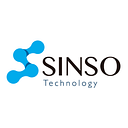Understand the Background of SINSO in one minute
Huge Medical Expenditure For Every Country
Medical cost have been surging in both China and US in ten years. Per capita health care expenditure for US has reached 11 thousand USD, up from 550 USD in 1975. US researchers indicate that this figure will exceed median of family income by 2037.Many people can’t afford their medical cost, regardless the emerging and development of high technology and medical technology. Recently, the proportion of medical expenditure carried by individuals in China has reached more than 50%, and in many areas that don’t have sufficient medical insurance funds, individuals carry 70% of medical cost.
In America, there is a big gap between rich and poor in health care .Lowincome citizens usually get less medical care opportunities compared to the middle class and rich. The Covid-19 epidemic has increased this gap. According to researches from American Insurance Industry Associations median medical cost for hospitalized covid-19 patients ranges from $30,000 to $60,000 (2000,000 to 400.000 yuan ).This means likely bankruptcy for those who got insufficient or none medical insurance. In China, the medical gap is not that big. Medical care services are active with the government’s intervention. However, there is great pressure on payment of the medical insurance funds as individuals are paying more and more yearly .In underdeveloped Africa areas, health care equality is out of the question due to medical resources shortage ,uneven distribution and huge rich-poor gap.
Rising Amount Of Medical Data
Data are generated in the medical process. According to Chinese laws and related regulations, medical institutions must keep patients’ data for 30 years ,and Clinical data for 15 years. Moreover, China has not yet solved the date fragmentation and data silos problem, neither has US. As we all know, medical diagnosis and treatment are closely related to our health data and medical records.
If we can use the data reasonably, we can greatly improve our health and reduce our overall medical expenditure. Since there is no conversion from data to data assets , we are not able to process a deep phenotypic analysis on the data, thus the understanding on our health is always fragmented and superficial. We always focus on data offered by medical institutions and believe that’s all we can have. But those data are far from enough in individual analysis. We need data that combines depth, length, and breadth. We have to open up a new land for deep phenotypic analysis. “Consumers are not just data producers, they should own their own data and get more, thus be responsible for their health.” By the way, individual medical data amount are rising from a few hundreds MB to hundreds of TB, and it may reach to PB level in the futures. It’s hard for institutions ( medical institutions and relevant national health institutions ) to keep and manage all the data. Not only that the custody cost is high, also current system makes it difficult to stimulate the custodians.
blockchain technology builds doctor-patient trust
We can see great progress in medical technology in recent years .It’s easy to get a advanced DR or MR machine for remote villages in China. And remote diagnosis platform solves the problem of uneven distribution of high quality doctors. But we’ll find that we are spending less time communicating with doctors.
The first consultation took 60 minutes in 1975 in US, now it has reduced to 12 minutes. Medical technology development failed to build tight trust between patients and doctors. Moreover, lack of communication between the two sides are closely relevant to misdiagnosis, superficial contact with patients makes it worse and brings unnecessary inspections as well as ineffective treatments. Medical practitioners always pay attention to quantity to get huge economic return, this forms a strange circle. Actually 30% to 50% CT scans are unnecessary. We need to bring in a new concept “less is more”. All data is expected to be effective and accurate, not unproductive waste. We are looking forward to see Sins to change and improve this situation. Hospitals and doctors may exaggerated the benefits of diagnosis and treatment due to cognitive biases. But we need to reflect, is the medical industry the bigger the better ? There is no way to supervise, incentivize punitions’ mission is to build a “healthier and better “era for mankind.
We are expecting to “lead mankind to a democratic medical care era”.We need to establish fair, transparent medical health infrastructures on the premise that individuals own their data. Rise of machines and artificial intelligence should come with better humanization, so that doctors have more time to accompany and empathize patients .This defines real high quality medical care. 6 The biggest value of blockchain technology is to deal with the trust issue. Many technologies that combine centralized databases and cryptography have been moved to medical field. But it is not the key issue for blockchain. This makes it difficult for ordinary people to understand the core of blockchain medical care. The main task of SINSO is to build up a new land for doctorpatient trust. The first step is to initiate a “personal health data management revolution”.
